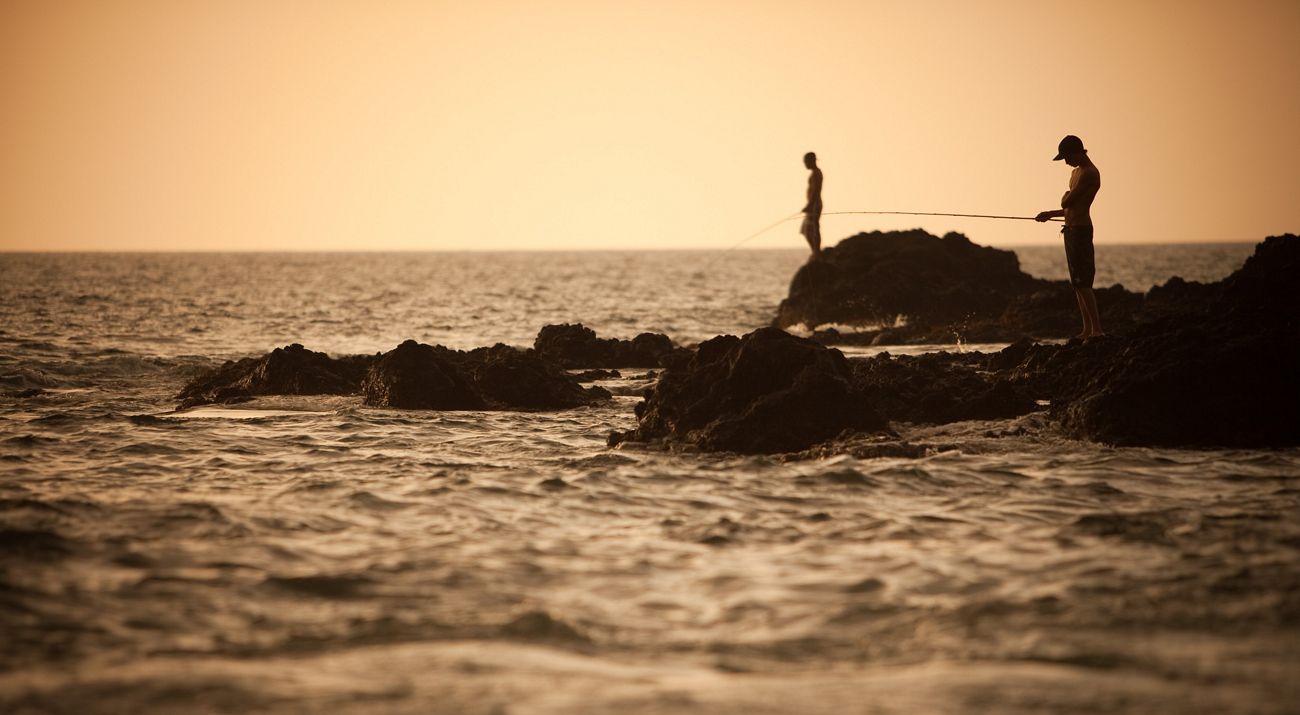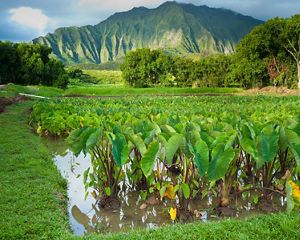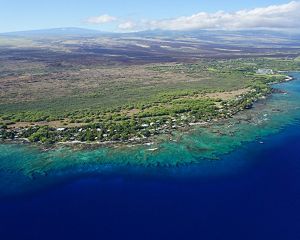TNC science supports community-led conservation.
The coastal fishing grounds of Ka‘ūpūlehu were once renowned for their abundance of fish, lobster, octopus, and ‘opihi, a local delicacy. The exceptional ecological management systems devised by Native Hawaiians undoubtedly helped maintain this abundance, but as modern systems evolved and replaced them, marine life began to decline. In fact, two decades of research beginning in the early 1990s show coral cover declined by more than 50% and the abundance of highly prized food fish declined by up to 75%, reinforcing the observations of kūpuna (elders) and other longtime residents. Scientists confirmed additional coral loss of up to 44% in the area following a statewide coral bleaching event in 2015.
Blending Traditional Practices With the Latest Science
The Ka‘ūpūlehu Marine Life Advisory Committee (KMLAC), a group of local families with ancestral ties to the area, landowners, businesses and advocacy groups, has been working for more than two decades to restore coral reefs and fish populations through improved collaborative management with the State.
At the group’s request, TNC scientists have been conducting coral reef and fish surveys since 2009 to support the KMLAC’s management, which is rooted in traditional knowledge and customary practices, and combines the best conventional science. TNC scientists have also joined forces with federal and state partners to discover which reefs are better able to withstand, recover from, or adapt to coral bleaching events. Identifying these “resilient” reefs that have the best chance for long-term survival helps reef managers decide where to focus our efforts. Read a report summary to learn about coral bleaching and how it has impacted the area’s reefs.
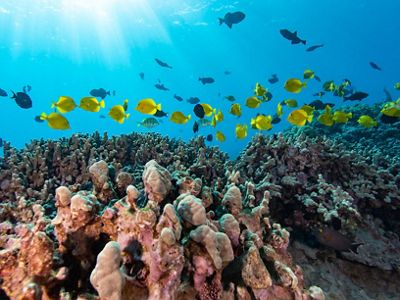
Securing Hawai‘i’s First Community-Driven Fish Replenishment Area
In 2016 with widespread community support, the state established a 10-year rest period on harvest along a 3.6-mile stretch of the Ka‘ūpūlehu coastline. This action is giving fish time to grow and reproduce so the fishery can recover and provide for sustainable fishing in the future. Watch a video (6:14) and learn more about this effort from some community leaders.
Six years after the Ka‘ūpūlehu Marine Reserve was established, TNC surveys revealed that the biomass (combined weight of all fish) of highly prized food fish increased by 91% inside the rest area and <1% outside. Similarly, the biomass of prime spawners (large sexually mature fish that produce the most offspring) increased by 151% inside the rest area and 18% outside.
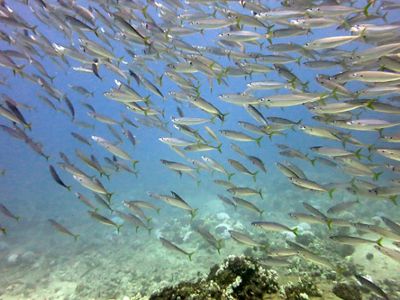
Creating a Sustainable Fisheries Management Plan
TNC introduced FishPath and FishKit—powerful, participatory, science-based tools for developing customized, culturally appropriate fisheries management plans—to support the KMLAC’s development of a fisheries management plan to guide harvest when the rest period expires in 2026.
The goal of their sustainable harvest plan is to ensure most of the gains achieved over the 10-year rest period are maintained once the area is re-opened to fishing, so the community and future generations can continue to practice cultural traditions and the waters of Ka‘ūpūlehu can feed the community for generations to come.
Building Reef Resilience for Fisheries and Long-Term Security
Coral reefs support Hawaiʻi’s economy, lifestyle and cultural traditions and protect coastlines from storms and rising sea levels. They also provide essential habitat for the fisheries the KMLAC is working to sustain. To help ensure that Ka‘ūpūlehu’s reefs thrive long into the future, TNC and the KMLAC launched Kanu Ko‘a (planting corals), the first community-led coral reef restoration project on the Island of Hawaiʻi. Learn about this vital work. Kanu Ko‘a integrates Hawaiian culture, local community and the science of coral restoration to accelerate coral reef growth and recovery. Watch a 5-minute video or read a press release about the project launch.
Quote: Vern Yamanaka
Impacts on ko‘a have been devastating. As stewards of Kaʻūpūlehu, it is our kuleana to do what we can to protect ko‘a, the basis of life in our nearshore waters. We need healthy reefs to maintain the marine life we are working to protect and sustainably manage, and this project will help us do that.
Connecting for Conservation
The KMLAC is a member of the Kai Kuleana and Hui Loko networks, which TNC helped establish and facilitates. These peer learning networks are comprised of community groups across Hawaiʻi Island that share knowledge and resources and take collective action to accelerate conservation. Find out how networks amplify impacts by building on success at sites.
Learn more about our science and restoration and how we help strengthen conservation management and leadership so Hawaiʻi’s reefs can support healthy fisheries and prosperous communities long into the future.
We Can’t Save Nature Without You
Sign up to receive monthly conservation news and updates from Hawai’i & Palmyra. Get a preview of Hawai’i and Palmyra’s Nature News email.

